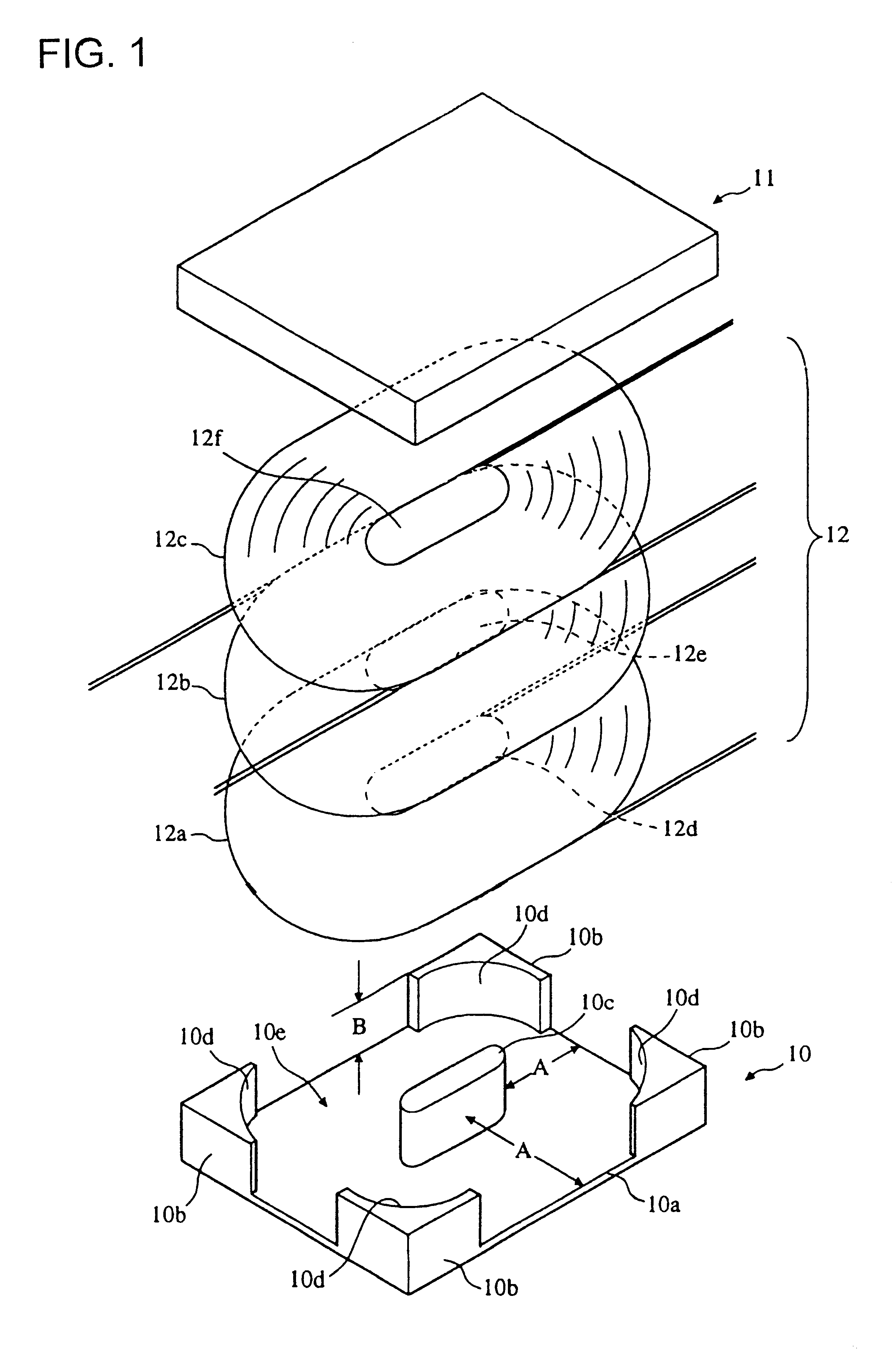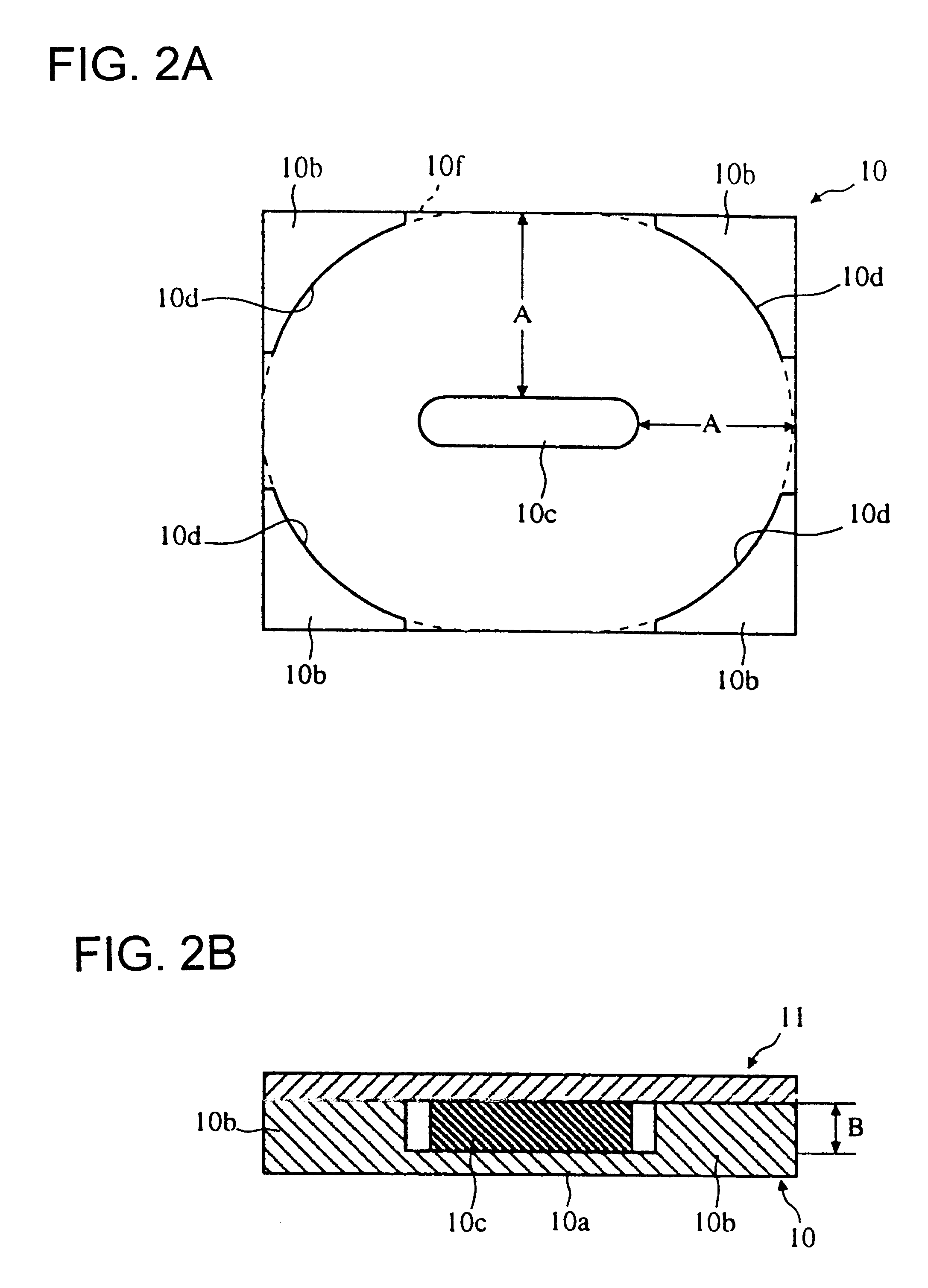Transformer
a transformer and transformer technology, applied in the field of transformers, can solve the problems of inconvenient and thinness of transformers, and achieve the effect of reducing the number of transformers
- Summary
- Abstract
- Description
- Claims
- Application Information
AI Technical Summary
Benefits of technology
Problems solved by technology
Method used
Image
Examples
Embodiment Construction
FIG. 1 is an exploded perspective view of an embodiment of a transformer in accordance with the present invention.
The transformer of the embodiment comprises a first magnetic core 10, a second magnetic core 11 which can be placed upon the first magnetic core 10 and secured integrally therewith, for example by use of a suitable adhesive, and a coil 12. The coil 12 comprises three layers that are stacked upon each other in the first magnetic core 10.
The first magnetic core 10 is formed of, for example, a ferrite material, and comprises a rectangular flat plate 10a, outer legs 10b provided in a standing manner at the four comers of the flat plate 10a, and a middle leg 10c provided in a standing manner at the center of the flat plate 10a. Each outer leg 10b is substantially L-shaped in cross-section, in plan view, with the inner side of each leg 10b being formed as a circular-arc-shaped surface 10d. Although in the embodiment the flat plate 10a used is rectangular, it does not need to b...
PUM
| Property | Measurement | Unit |
|---|---|---|
| width | aaaaa | aaaaa |
| thickness | aaaaa | aaaaa |
| width dimension | aaaaa | aaaaa |
Abstract
Description
Claims
Application Information
 Login to View More
Login to View More - R&D
- Intellectual Property
- Life Sciences
- Materials
- Tech Scout
- Unparalleled Data Quality
- Higher Quality Content
- 60% Fewer Hallucinations
Browse by: Latest US Patents, China's latest patents, Technical Efficacy Thesaurus, Application Domain, Technology Topic, Popular Technical Reports.
© 2025 PatSnap. All rights reserved.Legal|Privacy policy|Modern Slavery Act Transparency Statement|Sitemap|About US| Contact US: help@patsnap.com



